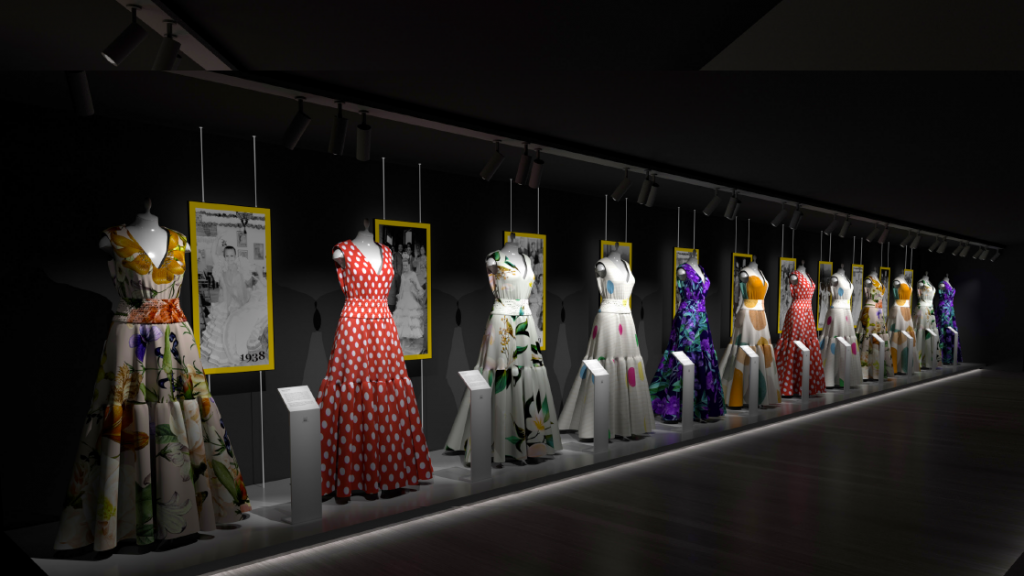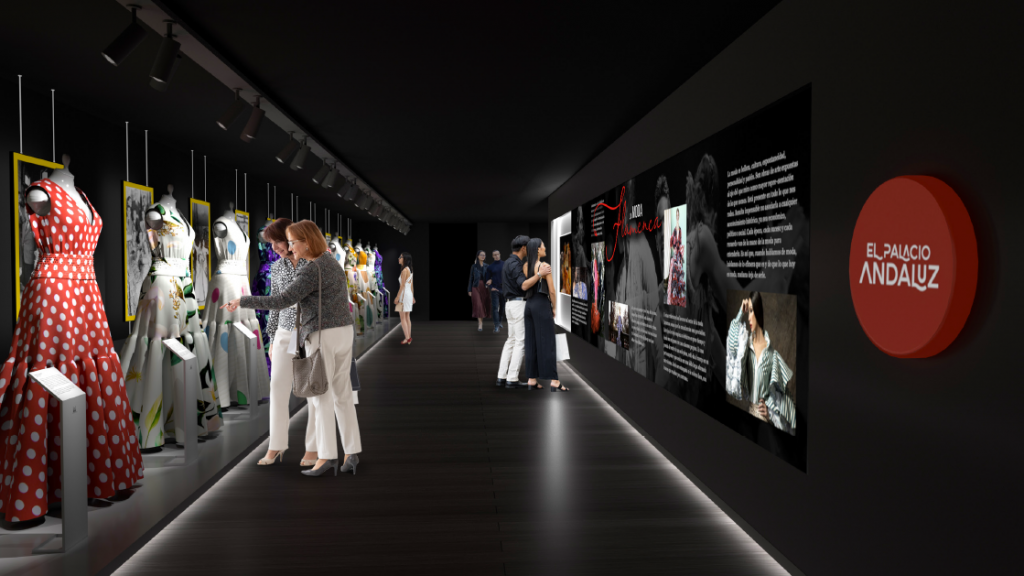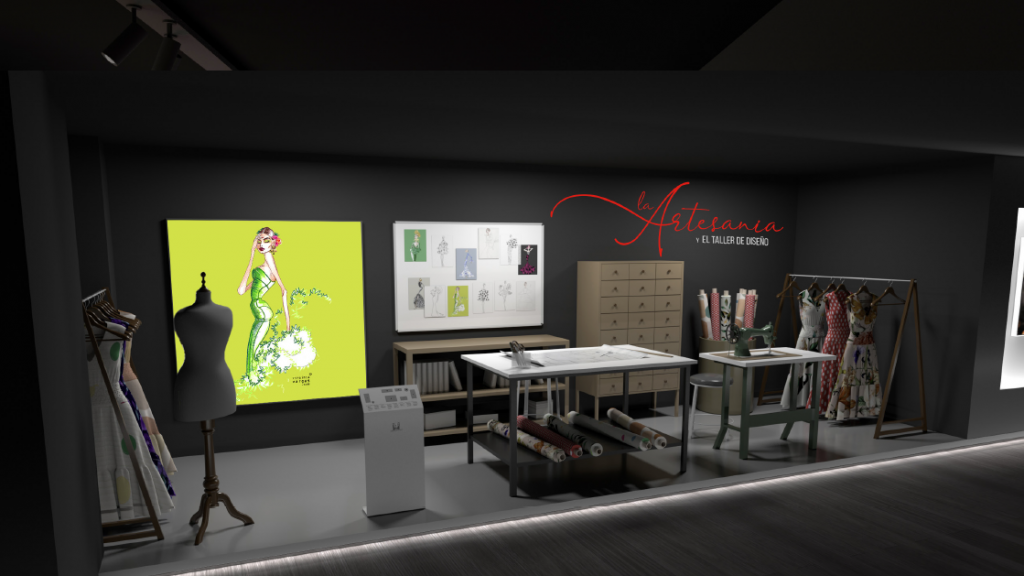
Flamenco is a unique artistic expression that combines music, dance and singing. The flamenco dance costume and its accessories are an essential part of this art form, as they help to transmit the emotion and feeling of the performance.
The Palacio Andaluz, in its firm commitment to the conservation and dissemination of flamenco, and as part of the Inside Flamenco cultural project, takes a step further by expanding its cultural offerings with the launch of the Flamenco Dress Museum, an initiative with which visitors can delve into the history and evolution of this flamenco costume from its origins to the present day.
The flamenco dress is a reference point for Andalusian culture, as well as being the only regional dress that changes every year, following fashion trends.
Also called gypsy costume or faralaes costume (the latter term is less popularly used), the origin of this costume is not clear: some historians place it in Crete; others in the Arab-Andalusian past of Andalusia and, the last ones, in the regional costumes of the beginning of the 19th century, which seems to be the most accurate theory.
Be that as it may, the fact is that its use became popular at one of Seville’s most famous festivals: the Feria de Abril (April´s Fair). From 1890 onwards, the prototype of today’s flamenco dress began to be worn, a full-body dress, tight around the waist and adorned with ruffles, accompanied by accessories such as combs or a shawl or small shawl.
This popular festival was the setting in which the flamenco dress reached its splendour, especially from 1920 onwards, when fashion was introduced into its manufacture. So much so, that since 1994 there has been an annual fashion show in Seville dedicated solely to the flamenco dress: SIMOF (Salón Internacional de la Moda Flamenca).

All this story is told in this new exhibition, located in the Flamenco Fashion Space, within the facilities of El Palacio Andaluz. Visitors can get an idea of how it has evolved thanks to the sample of dresses on display, created by designers, some new and others already established in national and international flamenco fashion.
The exhibition also includes an immersion with an LED screen so that everyone who comes to the Flamenco Dress Museum can enjoy an immersive visual experience through images and videos, a sewing atelier and an exhibition of hats, shawls, fans, combs, heels, earrings, flowers… Accessories that add strength and elegance to the flamenco performance or, like mantillas and combs, also have a cultural and traditional meaning in Andalusia.

You can visit the museum with free admission, at any of the opening hours, or by means of a guided group visit, in which you will discover more about the history and curiosities of our two exhibition spaces: the Flamenco Dress Museum and the Museum of Flamenco and Andalusian Art.
Check availability and prices at comercial@elpalacioandaluz.com. Don’t miss it!
© 2025 El Palacio Andaluz. All rights reserved.